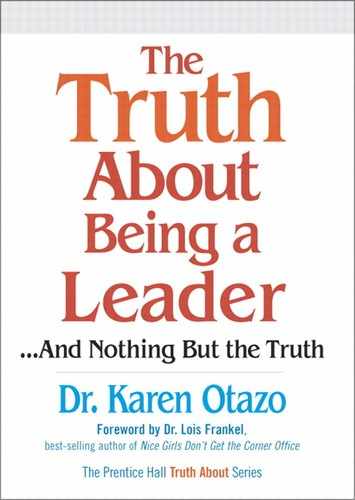Truth 30
The Structure Is Not The Organization, Just As The Map Is Not The Territory
There's an old story about a man looking for something under a streetlight. A passerby stops and asks what he's looking for. His keys, he says, and carries on. After a while the passerby asks where exactly the keys were lost. The man says it was down the block. So why is he looking under the streetlight? "That's where the light is."
In the intense search for better results, companies commonly look to restructuring exercises. Restructuring means changing organizational relationships and groupings or the way in which work is allocated and done. These days, in the face of tough global competition, restructuring is often done to cut costs and increase profits. It's a popular pastime because it's "where the light is": an easy exercise to do on paper—moving around boxes, titles, and roles on the organization chart. But just like our friend at the lamppost, many organizations aren't really looking in the right place. Those restructuring exercises, while making the organization "leaner" and, in many respects, "meaner," all too often don't make it any more effective.
The truth about restructuring is not "don't do it." In fact, the first truth of intelligent restructuring is that, in a healthy organization, it happens all the time. Good leaders keep a constant eye on organizational patterns and processes, making subtle changes—a better person for that job, a better way of delivering that project—one after the other, all the time. They don't just wait until they need a boost or have a problem. The second truth is that, unfortunately, no guaranteed formula for success exists. There are several ways to look at and structure organizations; all of them have their place. The third truth is that it's the soft stuff, like people, that counts, and much of this can't be seen or measured on a chart.
All too often restructuring exercises miss the point because they are too focused on what is happening on that piece of paper. They tend to look at the "hard" components of an organization, which can be easily pinned down in a diagram: structure, strategy, and systems. The diagram leads to logical outcomes, determining who might need to be moved and who might need to go. What this approach misses is that the "softer" elements of organizational life have an equal or greater impact on how an organization functions. These include staff, skills, and shared values. The quality and nature of all of these require careful consideration when you're making changes.
If you do decide to go in for a major organizational redesign, it pays to choose a soft or people-led approach. Rather than looking only at the figures, consider how any proposed changes will play out with your workforce. Will lean staffing make for more irritable and uncompromising leaders who will step on people's toes? Perhaps the skills you already have represented in that workforce might suggest ways of tackling a problem that don't involve reducing head count. If the organization's shared values will be affected by the changes, consider that however much sense they make economically, the fallout in terms of lost motivation may have a stronger negative impact. Many sports teams have found that trading respected players costs them the winning chemistry they developed over time. You have likely invested considerably in your employees' training, loyalty, and organizational knowledge. It pays to weigh your employees' needs against the pennies you might save in the short term. You don't want to waste your investment.
As the leader of an organization, before you effect change, be sure to balance present needs against the long-term potential of the skills you have in place. Ideally, rather than impose abrupt change, you'll gently readjust your organizational structure to reflect how your skills base is developing, or how you want it to develop in years to come, in an ongoing manner. If you want young players to develop leadership ability, for instance, it's worth creating small units where they can learn more complex skills progressively. With a bit of luck, and a lot of application, by keeping your eye on the ball with the small changes that make sense, you'll avoid the need for painful and comprehensive restructuring further down the road.
Many sports teams
have found that
trading respected
players costs them
the winning
chemistry they
developed over time.
